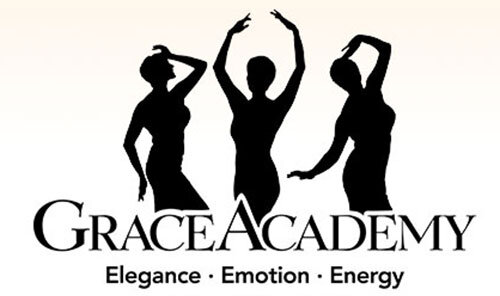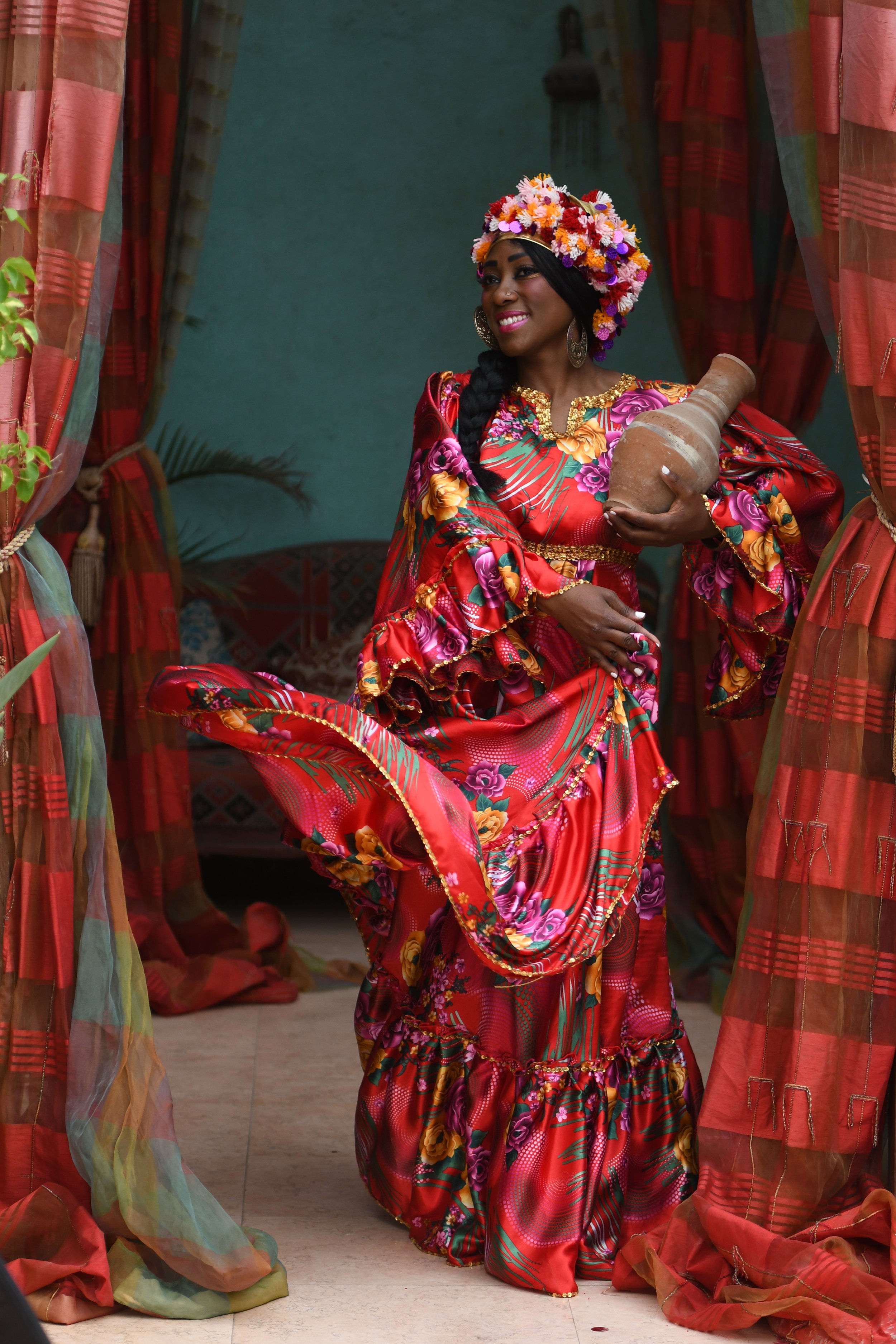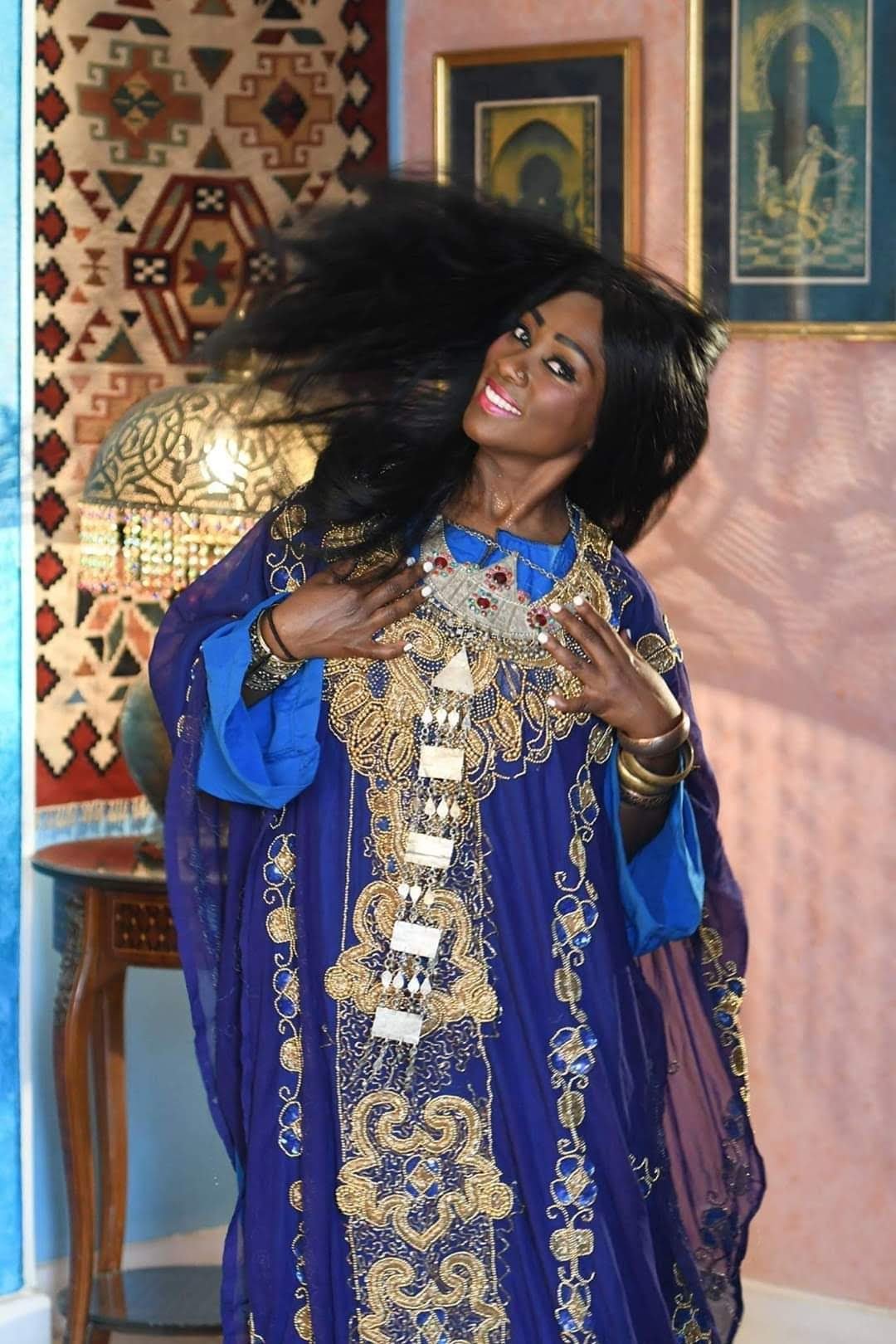Dancer Origin Stories – Khadijah
Khadijah is a teacher, dancer, ethnologist of African in origin dances and choreographer for 22 years. She is very thankful to be considered one of the most influential names in Arabic dance and folklore.
She is known for having unique didactics of Afro-Arabian Folklore, music and its cultural aspects. In a fortunate addition to being highly sought after in the Denver community, she can be seen performing live in Denver's top establishments. She is thankful to have been invited in the past and current to teach and perform in various US states and abroad.
Let’s dig into Khadijah’s Origin Story…
Q. What is your first memory of dance?
A. Growing up in the Kingdom of KSA , religious behaviors and conduct is expected from everyone at all times. At a point in my youth , I was able to see old black and white Egyptian movies with raqs sharqi on TV and I was immediately in love! And of course, there was a lot of social dancing in engagements, weddings, birthday parties, gatherings of all women … any celebration really.
Q. How was social dance or music a part of your life growing up?
A. Dance has always been a part of my life in some form, but seeing it up close and personal at the celebrations was just, like, wow… words can not describe. That was my first real encounter with the dance socially.
I do have some family members who are musically inclined. My late mother played drums for a little bit and I have aunts that are local singers. I have cousins that can play piano, violin , Oud and other instruments. So, music wasn't foreign to my family, but at the same time, we were not too outward about it.
As for publicly, it kind of depends on the celebration. Because dance and music was never “public” in the Kingdom with the exception of our National day, a lot of my exposure was at weddings, events, engagements, birthday parties, a new baby in the family , dancing with my family at home, graduations ….situations like that.
Q. When did you first start taking classes in movement?
A. My original foundation in movement came from my father. He did American-style boxing and mixed martial arts including Brazilian jiu jitsu. So, my earliest background in dance was really how to move and how to coordinate the footwork in boxing.
I came from a very tactical sports-oriented family. I wrestled with my brothers, I wrestled with my father, so that was my form of movement early on. My father trained with very big names, including Mike Tyson, George Foreman and Evander Holyfield. I got to witness all of his gym training firsthand.
Dance came into play when I was in Intermediate school. I was probably 10 or 11 years old, and there was an afterschool program supervised by a beautiful Egyptian woman.
Afterschool programs were supposed to be for tutoring but she loved dance and she taught us the most amazing movements. We were all like, “Teach us some more! Teach us some more!” That was like my real first involvement with the dance besides dancing with family, friends and various celebrations.
My father is a very religious man. He’s also a chemical engineer and he's all about education yet following a traditional Islamic path in life. The expectation is to get married young, you have a family, then your education, and that's all. My mother, who is deceased now, was always encouraging me to do what makes me happy.
When I came to university , I wanted to take some dance classes for exercise. It wasn't until I was about 20 or 21 when I took an actual raqs sharqi technique class, and I loved it. But never ever in a million years did I plan on dancing as a professional.
Q. How old were you when you were taking those first martial arts classes?
A. We started really, really young. I was barely coming out of diapers and watching my dad and his friends spar in his gym back home. I was probably between the ages of six to eight years old when I was physically alone in classes with other students studying with mixed martial arts professors without my Father teaching me directly.
Q. Was there a particular teacher who was really inspirational for you?
A. In the beginning it was very hard to find that in-person inspiration. I didn't find any teachers in the local community who were warm and welcoming, let alone being of inspiration to me. However, I had great colleagues and classmates. That makes such a difference in your willingness to stick to your discipline and continue those more serious dance studies.
Due to racism and bigotry, I almost quit. I really had to dig deep within myself and focus on why this dance moves me. It was really important to know who my real friends were and who was willing to help me get better as a person let alone a dancer within the Arabic dance genre. So, at first it was difficult, but going through what I went through to now have the best and greatest people around me is what inspires me everyday.
Q. What led you to turn that corner and decide that you wanted to dance on a professional level?
A. At first, I only wanted to do this for an activity. But the more dance knowledge I gained and the way the dance made me feel physically and emotionally, I craved it constantly! I loved the energy that it brought me, and it was a great way to just get low impact exercise unlike vigorous Jiu-Jitsu or Mixed Martial Arts. Also, it was a mental escape. There was something specifically about Egyptian technique that completely encapsulated me, at the same time I had a strong affinity for folk dances.
I grew up rurally and I was and am never ashamed of the country life. I love it! I live in the city now as an adult, but I live the country life in my heart and soon in the near future lol. My goal was to study the movement of the local people, the music and movement of the working class people. So, that led me down the path of learning as much as I can from whoever I can, to gain knowledge from people of various cultures. Reading MANY from books, sources and publications by people of the culture also.
Q. What would you share with foregin belly dancers about learning Arabic?
A. It's not an aggressive language and we all do NOT speak the same (in dialect) but some people may perceive it as that.
I always tell belly dancers that, first and foremost, when you are wanting to learn, MSA [Modern Standard Arabic] is how newscasters speak. We learn this in pre-primary school. Nobody really speaks like that “socially”.
I always tell non-native speakers, if you want to learn, learn your pronouns first. Always learn your pronouns first, and then start diving into your verbs and nouns and then you have to learn how to conjugate. Start there. Don't overwhelm yourself once you learn that. It's okay to move on to a dialect that you feel that you are comfortable with.
Q. Do you find that any of the different styles of dance that you’ve studied help to inform your Raqs Sharqi?
A. Any movement that has fancy footwork is definitely key, especially when you get into the folkloric styles from various regions. Ballet technique makes you very aware of your body, and I feel that, for certain techniques in folklore, you have to learn to let go of that poise and get a little earthy in the movement.
Famous Egyptian dancer Farida Fahmy once said, “I see dancers dancing so big, they're dancing far out of their body’s range. You want to dance in your limits. Don't take your foot out so far. Only point your toe to the extent of where you can. You don't have to make your movement so big that it throws off the whole center of your gravity.”
Get to know your own feet. Get to know your own body. Get to know where that weight placement is in your body. Don't be afraid to do funny exercises, like where you hop on one leg and see which leg feels lighter than the other, which side feels stronger than the other.
Q. Tell me about a movement that was easy for you to pick up.
A: For some reason, spins and turns came pretty easily to me. I've learned how to manipulate my own center of gravity and my foot placement where I'm actually spinning on my feet.
Q. What was something that you had to work harder to master?
A. Slowing down. Even though I grew up in a slower paced life, when you have a father who’s an engineer, everything is calculated, timing is always of essence
and simply being punctual is everything! But, really, not everything has to be a in a “hurry”.
I've had to really learn that in my adult years, especially after Veterinary School, and working in Emergency Veterinary Medicine. Even ER Vet Medicine translated over on to the stage where I could be dancing to a medium tempoed music, and I would kick it up just a notch…. For what? All I needed to do was to take it back a notch and slow it down.
Take your time. It's okay. There's not an emergency in dancing.
Q. What dance skills might translate into your everyday life?
A. For me, it took a long time to realize that science and art is a balance. If people really look at science, science IS art! For example, they say “take this injection is going to cure your diabetes,” or, “it's going to cure your congestive heart failure”, but look at the molecule and the structure of the element it took to formulate that injection or that pill . What are the elements or the chemical/molecular structure?
There are so many things in science that we take for granted. I always believe that science and art is a balance (for me) because, yes, as complex as veterinary medicine can be, it's also extremely rewarding! I tend to look at the bigger “positive” picture.
And for me, looking at the art itself, there's downsides and upsides to it. I try to look at the upside, even though sometimes that's a little bit hard to do, but the positivity from all the “good” in the small realizations of the upside will expand in your dance. Trust me , you will feel it and see it!
Q. Are there specific things from your academic life or from your career that you think really influenced the way you approach dance?
A: I hate to set the tone in the scenario of what Emergency Veterinary Medicine is really like, but a lot of people don't understand what it truly entails. We do not sit around petting furry /cute animals all night! When you've got a pet that's been hit by a car, has a broken leg, broken jaw, the animal is incredibly scared and disoriented! There are crying families, crying children, crying elderly, and so they're looking at you and speaking to you, “please, help me”.
So, first and foremost staying calm, learning how to breathe, learning how to move at a strategic pace, already having a plan enforced or anticipating the needs of the patient in your mind before rendering any treatment, and being preemptive in your approach is key and most important is knowing how to communicate that action through to the family even though they do not understand why we do what we do.
The same approach translates to the stage. The music enters your ear and it may be a Saidi rhythm for example. You are wearing the proper attire and props that are fitting for the Saidi music piece. You may have an idea of how you want to execute movements to a particular piece of music. It's okay to execute the idea within your knowledge and your own physical abilities.
Do what you can with what you know at the moment. Now communicate that to your audience, let them get to know who you are without saying a single word.
Always keep educating yourself in anything discipline that inspires you. In my dance training, I study with as many dancers as I can to gain more knowledge because there's still so much I don’t know and I always have the desire and will learn however I can, whenever I can. Continuing to learn helps me form more culturally respectful ideas for the stage, it helps me to form more combinations in my dance technique and the worst thing is to be a performer who is ignorant within the genre.
And last, but not least, learning to breathe and relax into the situation is key, because having an audience is scary. Learning how to breathe and staying calm, that's where the confidence comes from. Learning to focus and build on your own dance plan with what you know currently is important, but don’t be afraid to advance your knowledge, don’t be afraid to study dance and music outside of the Arabic dance genre. You will be very surprised how much this will help you advance in your current style, let alone in your everyday life.
About Khadijah
Teacher, dancer, ethnologist of African in origin dances and choreographer for 22 years. She is very thankful to be considered one of the most influential names in Arabic dance and folklore. She’s based in Denver, CO (USA), and of Kenyan descent born in KSA. She is known for having unique didactics of Afro-Arabian Folklore, music and its cultural aspects. In a fortunate addition to being highly sought after in the Denver community, I can be seen performing live in Denver's top establishments. I am thankful to have been invited in the past and current to teach and perform in various US states and abroad. I continue to perfect my dance education by studying with great masters and composers of Afro-Arabian Dances worldwide. I constantly travel to improve my approach, stylization, technique and cultural aspects of the dances and the culture embedded deep within the foundations of the African diaspora. I am the Owner and creator of various online platforms that already have students, dancers and musicians from all over the world to enjoy.
To get the lastest on what Khadijah is doing, check out her website at www.thedancerkhadijah.info!








